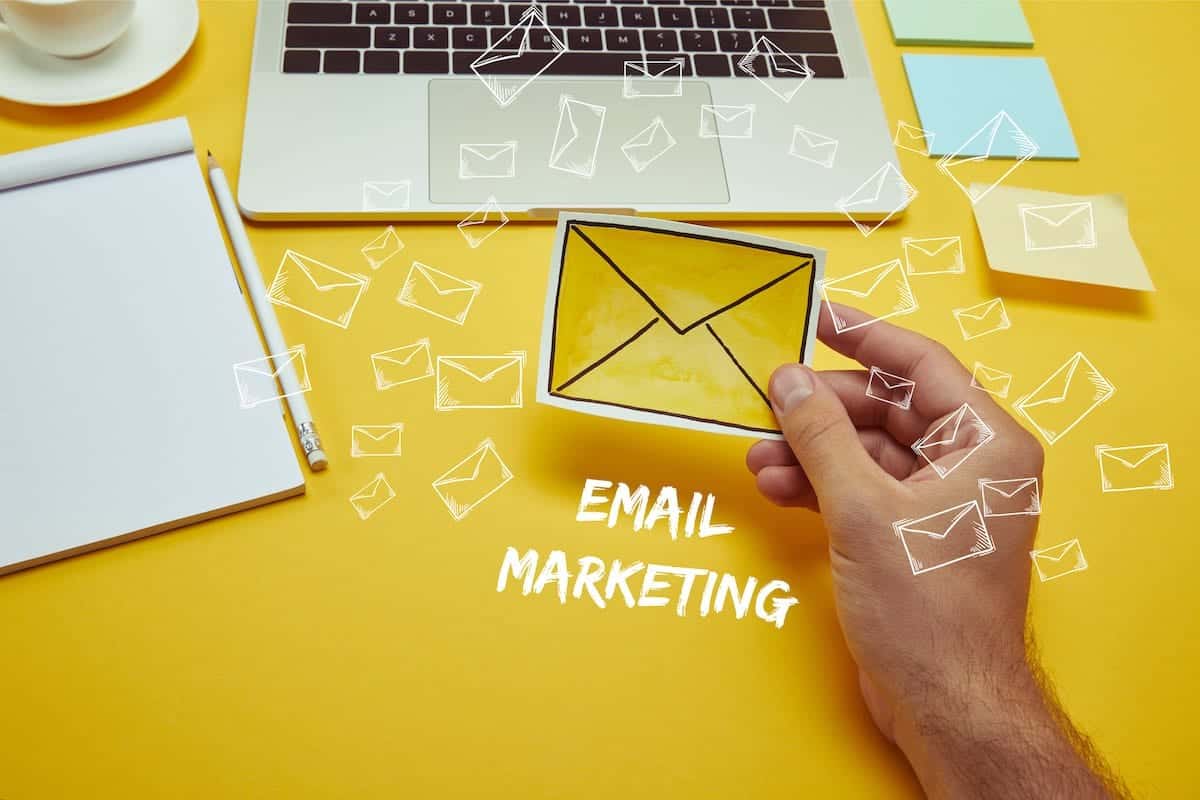By Tea Liarokapi
Emails are the root of all communication in this day and age, with an estimated 3.8 billion users.
This means that more than half of the planet’s general population uses email, making Ray Tomlinson’s idea one of the most groundbreaking ideas of all time and as useful as a home address today.
And since it is, indeed, that useful, it goes without saying that a business wouldn’t be able to survive without an email address and, of course, an email marketing campaign.
But email marketing campaigns and marketing automation, in general, are not just tools to boost sales.
They’re actually tools to do most things that have to do with acquiring and keeping customers happy, and this means boosting their user experience as well. And yes, email marketing campaigns can really do that.
First of all, why do you need email marketing campaigns?
The fact that emails have taken over more or less every aspect of communication, is common knowledge.
But let’s see some hard facts that pinpoint exactly why any business or service needs email marketing campaigns:
It’s the go-to medium for customers.
Ever heard the phrase “Send me an email?” It’s there for a reason. Most consumers actually expect an email from a business, that will keep them up-to-date and highlight their entitlements as customers.
Especially if there is a loyalty program they are a part of.
According to a study conducted by MarketingSherpa, email was the preferred way of communication, with a staggering 72%. You can see the graph below:
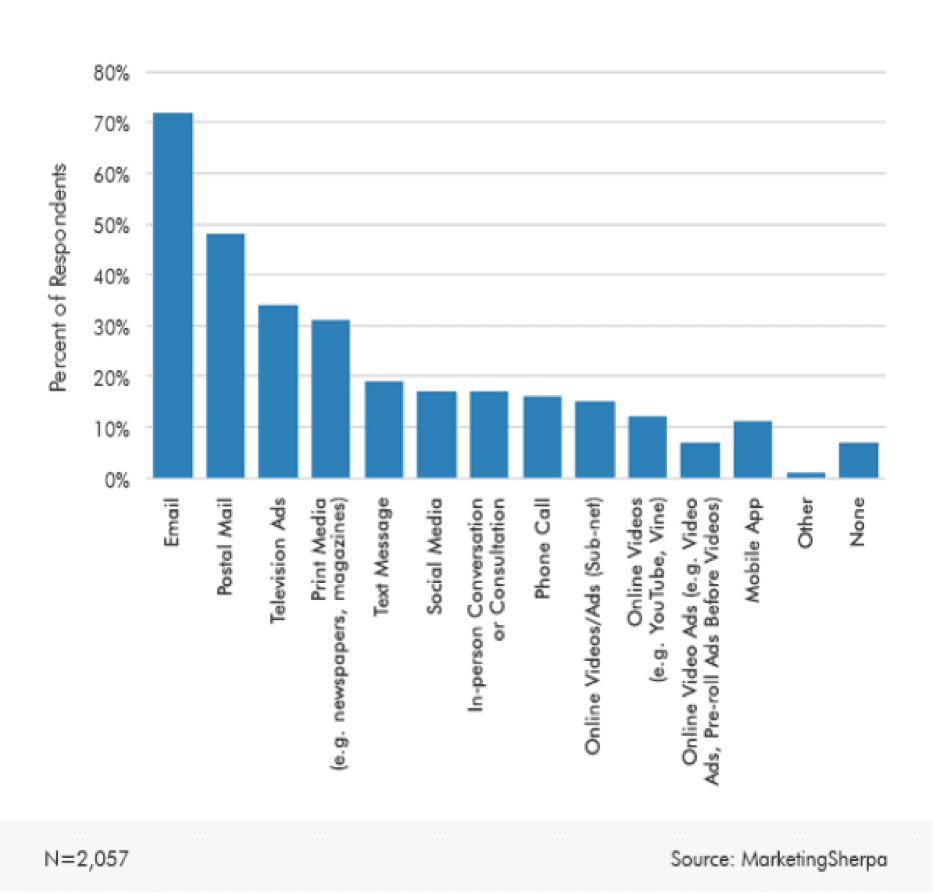
This proves the fact that, despite the predictions made in 2003, email is not dead and email marketing is alive and thriving.
And why wouldn’t it? Emails are personal, informative-especially when it comes to those last minute deals-and can be tailored to target specific groups. Moreover, having something in writing proves its validity. So, whether it’s an offer or a simple welcome email, this fact works in your business’ favor.
It’s the cheapest and most foolproof method yet, when it comes to businesses.
So, it’s not only beneficial for your customers, it’s beneficial for your business as well, so long as you do it correctly. This study, conducted by MarketingSherpa like the one mentioned above, shows that the higher the targeting, the higher the revenue.
Also, the prices of email marketing and automation providers are quite low, compared to what one would pay for paid ads or digital marketing services, it still ranks high on the “best solution to promote your business” scale.
Of course, we need to mention some of the key metrics that a business can track through their email marketing campaign:
- The open rate
- The click-through rate
- The unsubscribe rate
These three metrics, with some thorough and well-planned A/B testing can give your business a boost that no other kind of advertising campaign can.
Secondly, and more importantly…
As we mentioned in the beginning, email marketing campaigns can really improve user experience.
But let’s define what that is, first.
User Experience, or UX, “refers to the singular and accumulated experiences that occur for users as a consequence of them interacting with an object in a given context.” (Source)
In simple words, any kind of interaction with an object, as part of your brand’s marketing campaign, can be considered UX and UX includes any and all elements, from logos, to the speed of your website, to your customer service.
Of course, an email marketing campaign couldn’t not be a part of that list.
So, here are some key aspects with which you can improve the UX using our email marketing campaign.
A consistent brand voice
Your emails should echo your brand’s voice. For better or worse, consistency builds recognition and recognition is what a customer needs, in order to bond with a brand.
And in order to find that brand voice, you’ll need to consider what kind of core values your business has and how your target audience would like you to express them.
The study below shows that exact thing: You’ll need to be true and honest with your customers.
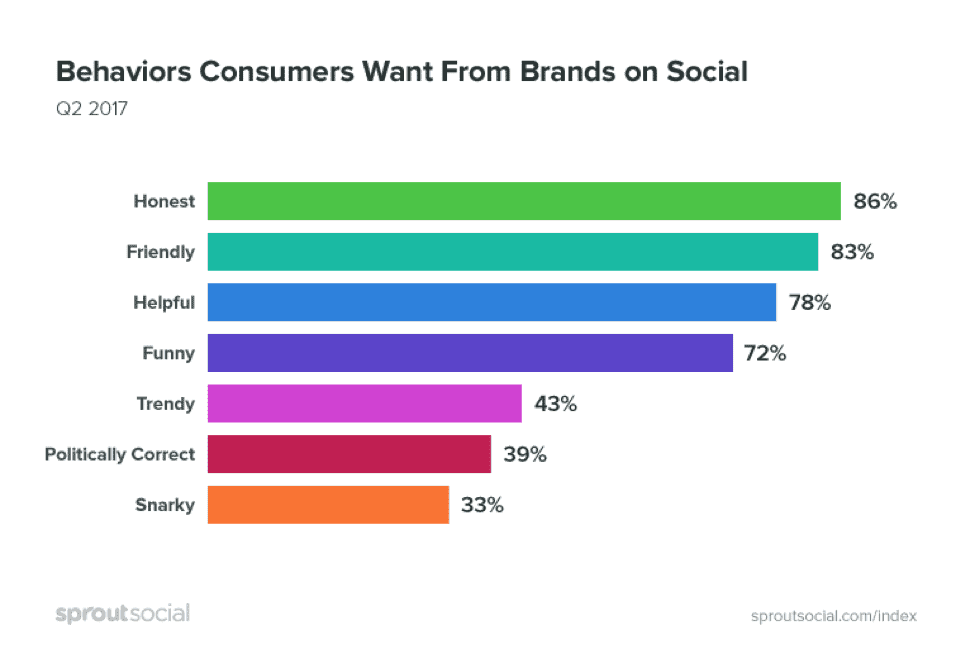
And this goes for your email presence as well as your social presence (shown in the graph above).
The smallest things could make a huge difference and, eventually, make you seem dishonest.
Such things are: Email copy and content that doesn’t match the brand’s voice, lack of human contact, or even lack of empathy.
Which brings us to our second point.
Personalization goes a long way
Non-personalized, generic emails look like they’re part of an email blast. They seem spammy and honestly, are a thing of the past.
Nothing captures one’s eye, as the mention of their name. Which means that content, color coordination, any and all logos are not as important as first impressions are.
So, instead of the outdated “Hello member/customer”, try “Hello John” and let them know that your email has been made just for them. This will automatically make the user open your email.
As for your subject lines: You’ll need the amount of charm, wit and honesty that will be just right, and you will need a subject title that:
- Will be short enough to keep the prospect engaged.
- Will be coaxing users into taking action, instead of bossing them around with words like “BUY!” or “SUBSCRIBE!”. These look spammy, especially if they’re in all caps.
- Try asking a question.
You can see some of the best examples of that practice here.
The subject lines are personalized, they’re witty and cryptic enough to make the user engage somehow.
But what about the content?
Apart from expressing the core values of the brand and being consistent with the brand voice, as we said above, it should look like it’s tailor-made for that specific target audience.
How is this going to happen, though?
Use list segmentation
This is one other form of personalization.
Not all people all the same, which applies to your email newsletter’s subscribers as well.
And this doesn’t just mean that they have different personalities. This also means that you’ve got different people down your funnel and you have to treat them all equally, taking into account their different wants and needs.
Each customer wants to feel special. This means that they will not take the time to interact with a generic email that applies to all people in your sales funnel. And the whole point of UX is interacting with the brand.
According to this study, segmented emails drive the biggest percentage of revenue. The graph below says it all:
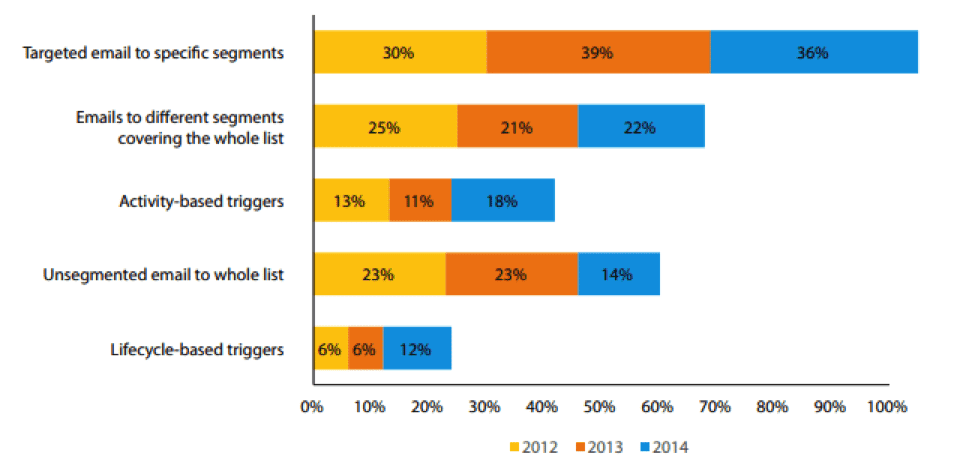
The more personalized the email, the better for your business, the better the experience your user has.
Look at this fine example of segmentation. They managed to increase their open rate by 244%.
Optimize for mobile
This should really be a no-brainer. Mobile devices are used more and more each day, and with that comes an increased click-rate on those devices. Does this mean that desktop doesn’t quite cut it anymore?
The answer to that, would be no. But since 48% of emails are opened on mobile, there is a huge need for these emails to be, indeed, mobile-friendly. Emails that load fast, without too many pictures, lesser navigation and clear, concise CTAs are more likely to convert.
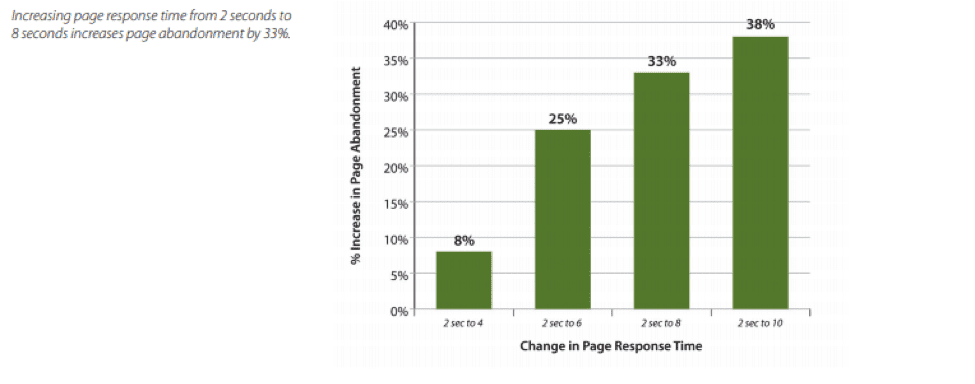
The graph above shows the percentage of increase in page abandonment, in regards to the response time. A one-second delay would lead to a conversion drop of 7%.
Try gamification
It’s the newest trend in email marketing software for small business and it’s safe to say that it’s quite interesting and it’s going very well.
It’s one thing to give out discounts in exchange for subscriptions-everyone does that-and a substantially different and definitely more exciting thing for the user to earn the prize by going through with a game.
And it shouldn’t be too hard, either. Just that little something that will keep things interesting and the user engaged and will help your email stand out.
Litmus used this technique in order to create buzz around their conference-and it worked beautifully!
Last but not least
UX consists of the following basic principles:
- Valuable
- Useful
- Usable
- Desirable
- Accessible
- Credible
- Findable
These basic principles were created by UX expert Peter Morville, who created the User Experience honeycomb.
This is basically a tool that explains the fundamentals of UX and how they can be used in designing something the users can’t help but interact with.
Here is what it looks like:
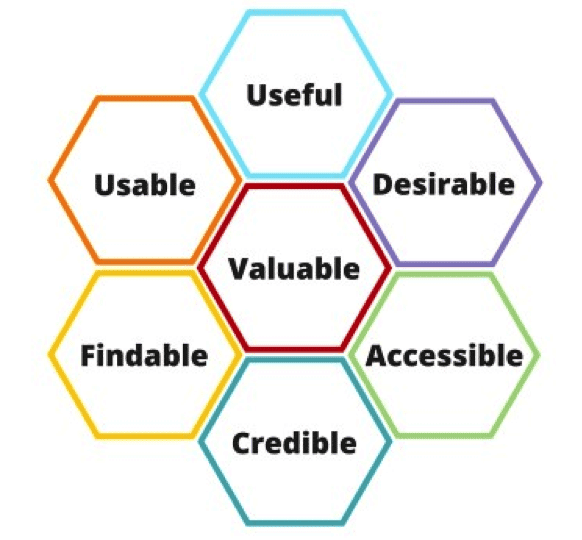
Notice that the value is the core principle of that honeycomb.
This is the reason why value should be the first thing a user will see, as the value will make them interact with the product-and in our case, the email.
But value is not the only thing that will drive users your way, as, apart from value, users need to see the use in your product.
Summing up
The basics you’ll need to remember are the following:
- You’ll need to be consistent.
Your brand voice, which is essentially what the user will interact with, has to be the same through all channels and the channels should compliment each other and not work against one another. This will make your brand lose credibility.
- You’ll need to personalize.
No two customers are the same. Moreover, people nowadays like to interact with people and not bots or automated messages that look and feel spammy.
- List segmentation is essential.
Find your demographics and personalize the newsletters for each different buyer persona in your mailing list.
Pro tip: Why not give your subscribers the opportunity to pick out the kind of newsletters they’d like to receive?
- Be original.
Too many emails are sent and received daily and the vast majority doesn’t exactly manage to keep the prospects’ interest.
Try something that hasn’t been widely used yet-gamification. The users will remain engaged and you’ll have a better click-through rate. It’s a win-win, really.
- Never forget the basic UX principles.
These are what you’ll need to incorporate in your email to boost the User Experience and manage to have engaged prospects and, down the line, loyal customers.
Takeaway
Now, I think you’re all set and ready to distinguish the design that will set you apart, when it comes to email marketing and User Experience and will make you fly towards reaching those KPIs!
Are there any other ways you don’t think we covered in this article? Please leave us a comment below and tell us what worked for you!
Featured photo credit: Depositphotos

